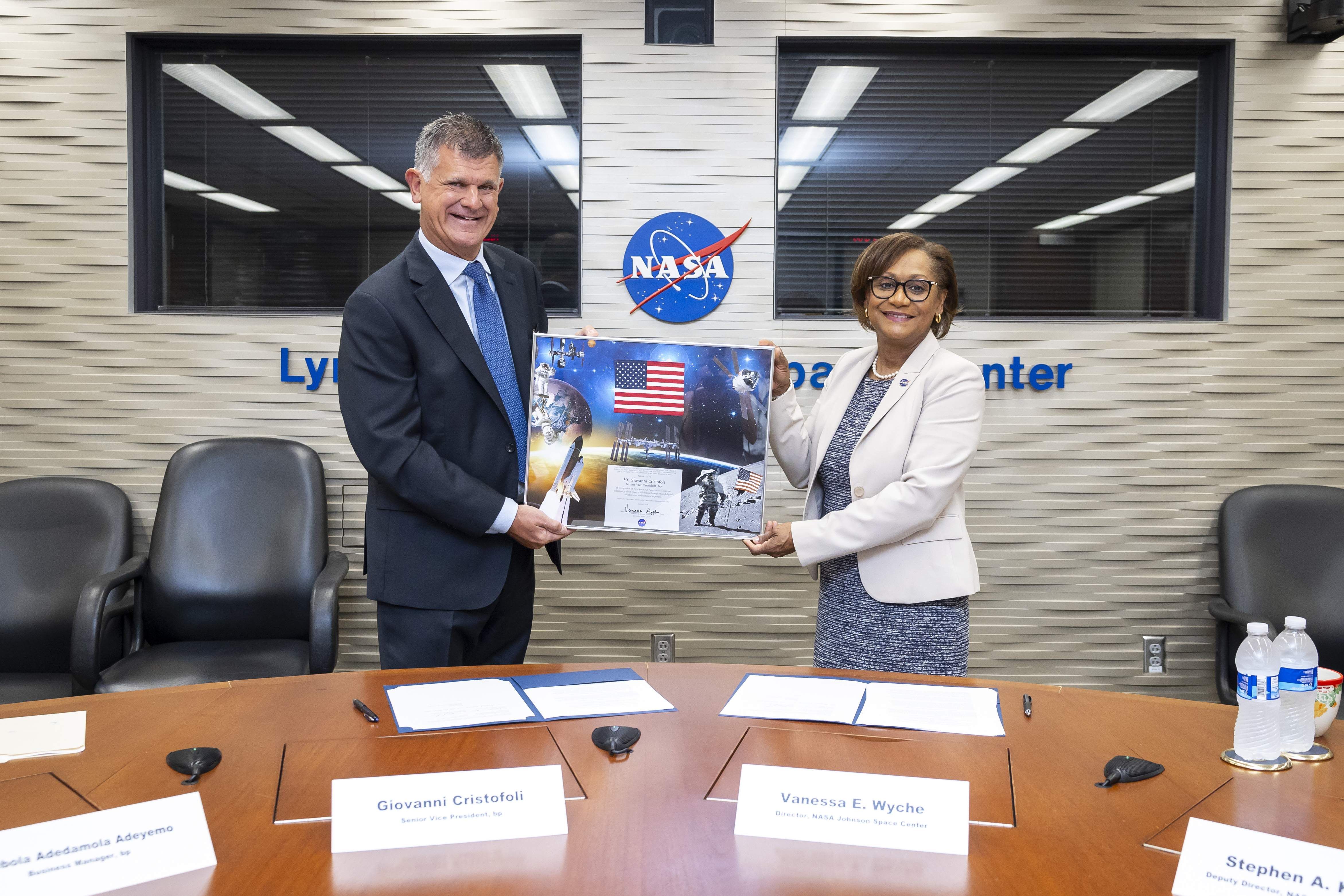collaboration station
NASA, bp team up to share digital tech, expertise with new agreement

The agreement will enable bp and NASA to collaborate on an array of technologies. Photo courtesy of bp
Houston-based energy company bp America is helping NASA boost U.S. space exploration efforts.
Under an agreement signed August 7, bp and NASA will share digital technology and technical expertise developed over several decades. The energy company says the deal will help advance energy production on earth, and will help advance exploration of the moon, Mars, and other planets.
For example, the agreement will enable bp and NASA to collaborate on an array of technologies. This includes digital models and simulations that let engineers and scientists visualize equipment in remote locations more than 7,000 feet underwater or millions of miles away on another planet.
The bp-NASA partnership evolved thanks to the Space Act Agreement. This agreement, part of the National Aeronautics and Space Act of 1958, allows NASA to work with companies, universities, and other entities to propel space exploration.
In a news release, Ken Nguyen, principal technical program manager at bp, says: “bp has built a proud legacy of technological innovation as we deliver the energy the world needs today while investing in the energy system of tomorrow. As NASA pursues a sustained presence on the moon and Mars, we see a unique opportunity for bp and NASA to work collaboratively on the forefront of digital technology that will cultivate further innovation in energy and space.”
Initially, bp and NASA will focus on developing standards, and expanding the capabilities of visualization and simulation models. Subsequent phases might include:
- Exchanging practices surrounding safety, communication, artificial intelligence, and other aspects of remote operations.
- Collaborating on renewable energy, such as hydrogen, solar, regenerative fuel cells, and high-capacity batteries.
“Both bp and NASA are custodians of deep technical expertise, working in extreme environments — whether that’s at the bottom of the ocean or on the moon,” says Giovanni Cristofoli, senior vice president of bp Solutions. “Sharing what we know with each other will help us solve complex engineering problems faster, meaning we can focus on keeping energy flowing safely and delivering higher margins with lower emissions.”
This won’t be the first time bp and NASA have teamed up. Offshore workers from bp have undergone underwater escape training at NASA's Neutral Buoyancy Laboratory, the astronaut training pool near Johnson Space Center. In addition, NASA has used bp’s Castrol lubricants for more than 60 years.